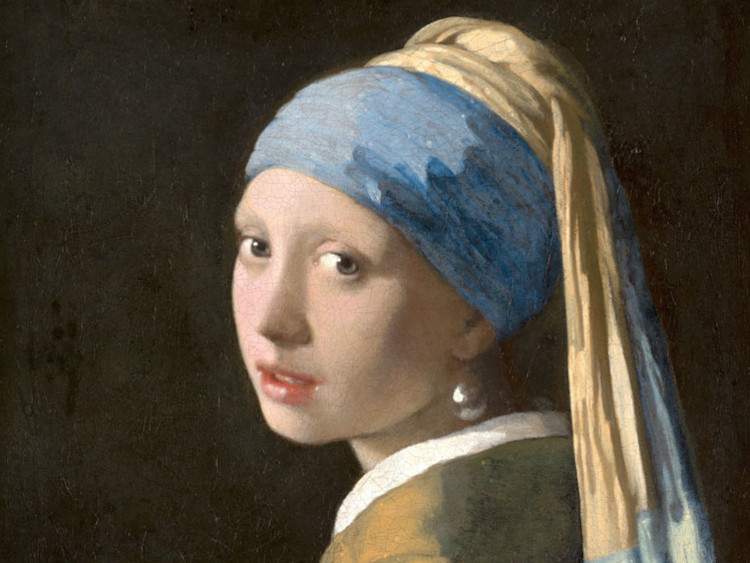Major Rijksmuseum exhibition dedicated to Vermeer opens, featuring masterpieces from around the world
Opening to the public today until June 4, 2023, is the major exhibition dedicated to Johannes Vermeer at the Rijksmuseum in Amsterdam, the first that the renowned museum is dedicating to the artist. Masterpieces from around the world will be on display for an exhibition intended to be the largest retrospective ever mounted on the Dutch master. Seven paintings have come to the Netherlands for the first time in more than two centuries. The exhibition focuses on the artist’s ambitions, work, life, faith and environment. In preparation for the exhibition, extensive research on the Delft artist was conducted in close collaboration with the Mauritshuis.
The twenty-eight Vermeer works in the exhibition are displayed in all ten rooms of the Philips Wing. Eleven themes offer visitors a more in-depth view of Vermeer’s work. In this way, his early ambitions, early interiors, the balance between the outer and inner worlds, letters, musical seduction, his worldview and inner values are addressed so that the visitor gets to know Vermeer more closely.
Seven paintings have never before been exhibited to the public in the Netherlands, including the newly restored The Girl Reading a Letter at the Window (Gemäldegalerie Alte Meister, Dresden), Interrupted Concert (The Frick Collection, New York), Fantesca Handing a Letter to the Lady (The Frick Collection, New York), The Glass of Wine (Gemäldegalerie, Berlin), and Lute Player (The Metropolitan, New York).
In preparation for the exhibition, extensive research was also conducted on the Delft artist. Discoveries were made about, among other things, his social position, his contacts with artists and other people in his environment, and the influence of his faith on his work.
Modern scanning techniques have accelerated research on Vermeer in recent decades. A team of conservators, restorers, and scientists from the Rijksmuseum, in close collaboration with the Mauritshuis and the University of Antwerp, conducted extensive research on the seven Vermeer paintings in the Dutch collection, which also involved paintings from other collections. Advanced Macro-XRF and RIS scanning techniques were used. Some surprising new findings have recently come to light in the famous painting The Milkmaid, which offers a deeper insight into Vermeer’s working method, his artistic choices and his quest for perfect composition.
Technical research will continue during and after the exhibition. The results of all studies will be presented at an international meeting at the Rijksmuseum in 2025 (on the occasion of the 350th anniversary of Vermeer’s death). It also presents research from other museums, such as the National Gallery in Washington and the Mauritshuis in The Hague.
Recent art-historical research also sheds new light on the influence of the Jesuit order on Johannes Vermeer, who was originally a Protestant. Research makes it plausible, among other things, that Vermeer came into contact with the camera obscura through the Jesuits. The research shows how Catholicism played an important role in Vermeer’s home and family, and also how it is reflected in his art.
This is the first time in its history that the Rijksmuseum is presenting a retrospective exhibition on Johannes Vermeer. The first and only monographic exhibition on Vermeer took place in 1995-1996 and was organized by the National Gallery of Art in Washington together with the Mauritshuis in The Hague. For a long time it was not considered possible to hold a retrospective of this level again. For all museums, Vermeer’s paintings are considered among the absolute masterpieces in their collections and therefore are rarely lent. Thus, this is the first time in history that all three Vermeer masterpieces from the Frick Collection can be seen together outside New York: from the Frick Collection come Interrupted Concert, Soldier with Smiling Girl, and Fantesca Handing a Letter to the Lady.
Masterpieces on display include The Girl with the Pearl Earring (Mauritshuis, The Hague), on view through March 30, Geographer from the Städel Museum in Frankfurt am Main, Woman Writing a Letter in the Presence of Her Maid from the National Gallery of Ireland in Dublin), The Lacemaker from the Louvre and Woman with Scales from the National Gallery of Art in Washington)
The exhibition was designed by French architect and designer Jean-Michel Wilmotte. The velvet setting with deep green, eggplant red and blue colors is inspired by Vermeer’s characteristic color compositions.
Due to the large influx of visitors the museum expects, the Rijksmuseum has extended the opening hours of the exhibition to give as many people as possible the opportunity to visit the large and important retrospective.
Hours: Sunday through Wednesday from 9 a.m. to 6 p.m., Thursday through Saturday from 9 a.m. to 10 p.m.
Online reservation through the Rijksmuseum website is required.
The exhibition is made possible in part by Ammodo, Blockbuster Fund, Rijksmuseum Fund, Rijksmuseum International Circle, Rijksmuseum Patterns and the Ministry of Education, Culture and Science.
Image: Johannes Vermeer, The Girl with the Pearl Earring or The Girl with the Turban, detail (c. 1665; oil on canvas, 44.5 x 39 cm; The Hague, Mauritshuis)
 |
| Major Rijksmuseum exhibition dedicated to Vermeer opens, featuring masterpieces from around the world |
Warning: the translation into English of the original Italian article was created using automatic tools. We undertake to review all articles, but we do not guarantee the total absence of inaccuracies in the translation due to the program. You can find the original by clicking on the ITA button. If you find any mistake,please contact us.



























